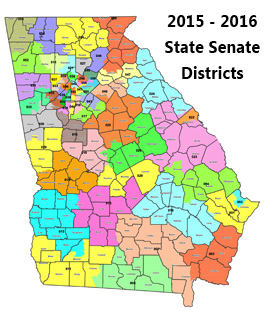It happens evert decade, after the Decennial Census, and recalibrates partisan electoral representation in a way that has a profound impact on state and federal policy. The process of redrawing legislative districts – redistricting – determines the makeup of state legislatures and the U.S. House of Representatives. Using the data from the census, states begin the process of negotiating district lines in a way that yields real winners and losers. The major political parties maneuver and manipulate the process established in their states to redraw districts and seek advantage to create scenarios that will elect the maximum number of partisans possible.
 Redistricting is the culmination of two of the most important activities in the democratic system in the United States, voting and the Decennial census. Voting determines which party will have the competitive advantage during redistricting, and thus be able to influence the final composition of the legislative map. The decennial census determines which states come up winners or losers in the House of Representatives as the population of a state determines how many House seats it will have. The 435 seats in House are apportioned by population. As a result of the 2020 Decennial Census, California and New York are likely to lose a congressional state while Florida and Texas are likely to gain seats. This is because California and New York experienced a drop in population. The latter could likely be the result of fewer people filling out their census forms. It is why being counted matters.
Redistricting is the culmination of two of the most important activities in the democratic system in the United States, voting and the Decennial census. Voting determines which party will have the competitive advantage during redistricting, and thus be able to influence the final composition of the legislative map. The decennial census determines which states come up winners or losers in the House of Representatives as the population of a state determines how many House seats it will have. The 435 seats in House are apportioned by population. As a result of the 2020 Decennial Census, California and New York are likely to lose a congressional state while Florida and Texas are likely to gain seats. This is because California and New York experienced a drop in population. The latter could likely be the result of fewer people filling out their census forms. It is why being counted matters.
Most states create some form of public commission, either established by the legislature or governor, that is granted the authority to draw legislative district maps using sophisticated software that consider population data, election trends, data on race, and relevant civil rights law. Though states require public hearings during redistricting, the process mostly takes place behind closed doors, and the partisan leadership generally negotiates the deals that result in how the lines are drawn. While there are certain ‘rules’ at play, the redistricting process usually, without fail, results in intense partisan bickering and often litigation when the parties cannot reconcile their differences.
Why is redistricting important? It sets in motion the numerical representation of legislators and House members, and that determines which party will have the advantage in setting policy and driving a political agenda. These legislative districts and congressional districts are set in place for a decade, so the long-term impact on communities is significant. A swing of a district or two could shift political control in a state, and impact education policy, criminal justice, judicial appointments and more. Redistricting defines the political majority because seldom are districts drawn in such a way that they are ‘competitive’ and result in uncertainty over which party’s candidate will win the district. This is why in many states, districts are ‘gerrymandered’ or oddly drawn so a political party can assure the election of their candidate. There are few ‘swing districts’ in the true sense of the term.
Much of the growth of the Congressional Black Caucus (CBC) and state legislative Black caucuses is attributable to the redistricting process and the ability to justify the creation of districts that allow constituents to elect people who they believe will represent their interests. The CBC owes much of its growth to hard fought legal battles during which the Voting Rights Act was used as a powerful tool to justify the increase in Black representation in Congress. Today, due to rulings of the US Supreme Court, the Voting Rights Act is a less potent instrument to increase the numbers of Black elected officials so the challenge now is to elect representatives of color, Black and Latino, from non-majority Black districts.
Citizens can weigh in on the drawing of legislative districts by testifying before their state redistricting commission and offering their opinion on how districts should be drawn. For example, the Maryland Redistricting Commission will hold its first hearing today. During redistricting, civil rights organizations such as the NAACP, NAACP Legal Defense and Education Fund, ACLU, Rainbow/PUSH, and the National Action Network will likely weigh in when it appears the electoral strength of Black voters is threatened by the redrawing of districts.

today in black history
July 26, 2024
The Republic of Liberia, founded by the American Colonization Society to resettle freed African slaves, gains independence in 1847.
The Coming Redistricting Wars
POSTED: May 05, 2021, 9:00 am






















